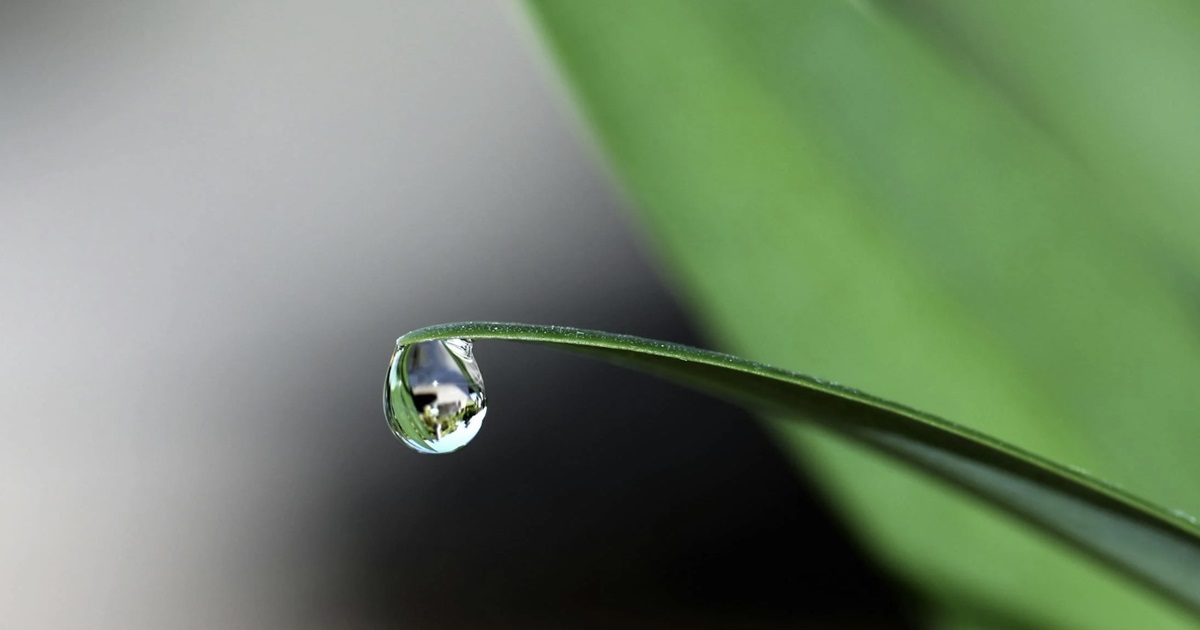The Actual Reason Why Your Plants Might Cry

source: Pexels
As a plant lover, I’ve spent countless hours in my garden, nurturing my green companions. I remember the first time I saw droplets on the tips of my plants’ leaves. I was a kid, and I genuinely believed my plants were crying. It seemed like such a human thing to do, and I couldn’t understand why a plant would shed tears. Over the years, I’ve learned that what I once thought were tears are actually part of a fascinating natural process.
Seeing plants with droplets on their leaves isn’t unusual. Many people have observed this and wondered about the cause. These “crying” plants are actually experiencing a phenomenon known as guttation. But before we dive into the science behind it, let me share a little more about my journey with these incredible organisms.

I remember my grandmother’s garden, a small but lush haven of various plants, each meticulously cared for. She had this knack for making everything grow beautifully, and I often found her inspecting her plants early in the morning. One day, she pointed out the droplets on her strawberry plants and explained, “These aren’t tears, my dear. The plants are just letting out some excess moisture.” It was a simple explanation, but it sparked my curiosity.
What is Guttation?
Guttation occurs when plants exude droplets of xylem sap on the tips or edges of their leaves. This usually happens at night when the soil is moist, and the air humidity is high. Unlike dew, which forms from condensation, guttation droplets come from within the plant itself.

During the night, when transpiration (the process of water vapor leaving the plant through small openings called stomata) slows down due to cooler temperatures and high humidity, the root pressure can push water up through the plant. This water, along with minerals and other nutrients, is then forced out through specialized structures called hydathodes located at the edges of leaves. The result is those small, shiny droplets that can sometimes be mistaken for tears.
What is Transpiration?
Transpiration is the process by which water is absorbed by plant roots from the soil, moves up through the plant, and is released into the atmosphere as water vapor through stomata in the leaves. This process not only helps to cool the plant but also aids in the transport of nutrients and minerals from the soil to various parts of the plant.
Transpiration plays a crucial role in the plant’s water regulation and nutrient uptake. It is driven by the difference in water potential between the plant and the surrounding air, causing water to move from areas of higher potential (within the plant) to lower potential (the atmosphere).

Guttation vs. Transpiration
While both guttation and transpiration involve the movement of water within a plant, they occur under different conditions and through different mechanisms. Transpiration primarily happens during the day when the stomata are open, facilitating the exchange of gases and water vapor. It is a continuous process driven by solar energy and atmospheric demand.
Guttation, on the other hand, usually occurs at night or in the early morning when the conditions for transpiration are not favorable. It is driven by root pressure rather than atmospheric demand. The presence of hydathodes differentiates guttation from transpiration, as these structures are specifically designed to release excess water.

Stressed Plants?
Now, you might wonder if these “crying” droplets are a sign of plant stress. In most cases, guttation is a normal response and not a cause for concern. However, if you notice guttation accompanied by other signs of distress, such as yellowing leaves, wilting, or stunted growth, it could indicate overwatering or poor soil drainage. It’s essential to observe your plants’ overall health to determine if any action is needed.
Cry for Help?
While guttation itself isn’t usually a cry for help, it can sometimes indicate that the plant’s environment needs adjustment. For instance, overwatering or high humidity levels can contribute to excessive guttation. Ensuring proper soil drainage and adjusting watering practices can help maintain a healthy balance.
Guttation is a fascinating aspect of plant physiology that highlights the intricate ways plants manage their water and nutrient intake. It shows the complex inner workings of these seemingly simple organisms. Observing guttation can offer valuable insights into the plant’s hydration status and overall health, providing clues to better care practices.

What to Do
If you notice guttation on your plants, there are a few steps you can take to ensure your plants remain healthy:
- Monitor Watering Practices: Ensure you are not overwatering your plants. Most plants prefer the soil to dry out a bit between waterings. Overwatering can cause root rot and other problems.
- Improve Soil Drainage: Ensure your plants are in well-draining soil. Adding organic matter or using pots with drainage holes can help prevent water from accumulating around the roots.
- Adjust Humidity Levels: If you are growing plants in a high-humidity environment, consider using a dehumidifier or increasing air circulation to reduce moisture levels.
- Inspect for Other Signs of Stress: Look for other indicators of plant health, such as leaf color and growth patterns. Address any issues promptly to prevent further stress.

As plant lovers, understanding phenomena like guttation enriches our appreciation of these green companions. While it may not be as dramatic as plants shedding tears, guttation is a beautiful example of how plants interact with their environment. So the next time you see those droplets on your plants, you’ll know they’re just managing their water and nutrients.